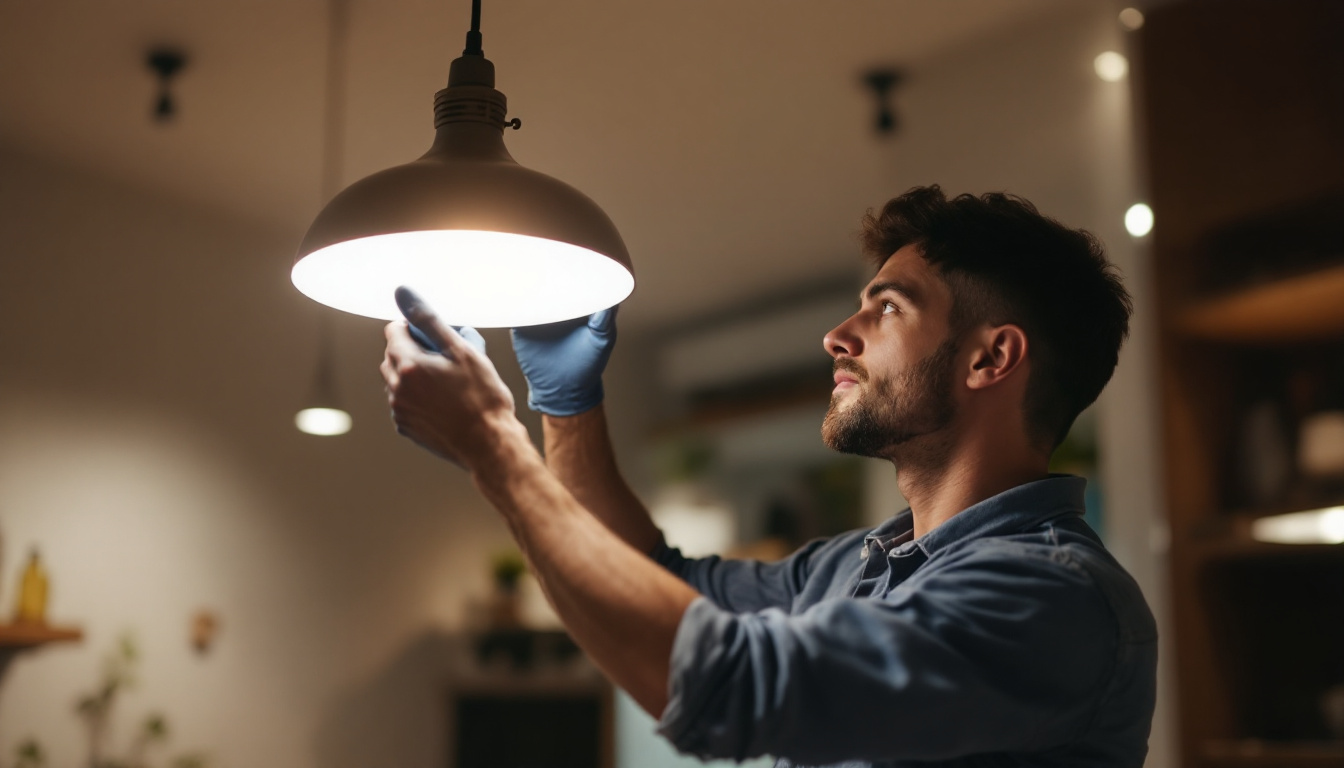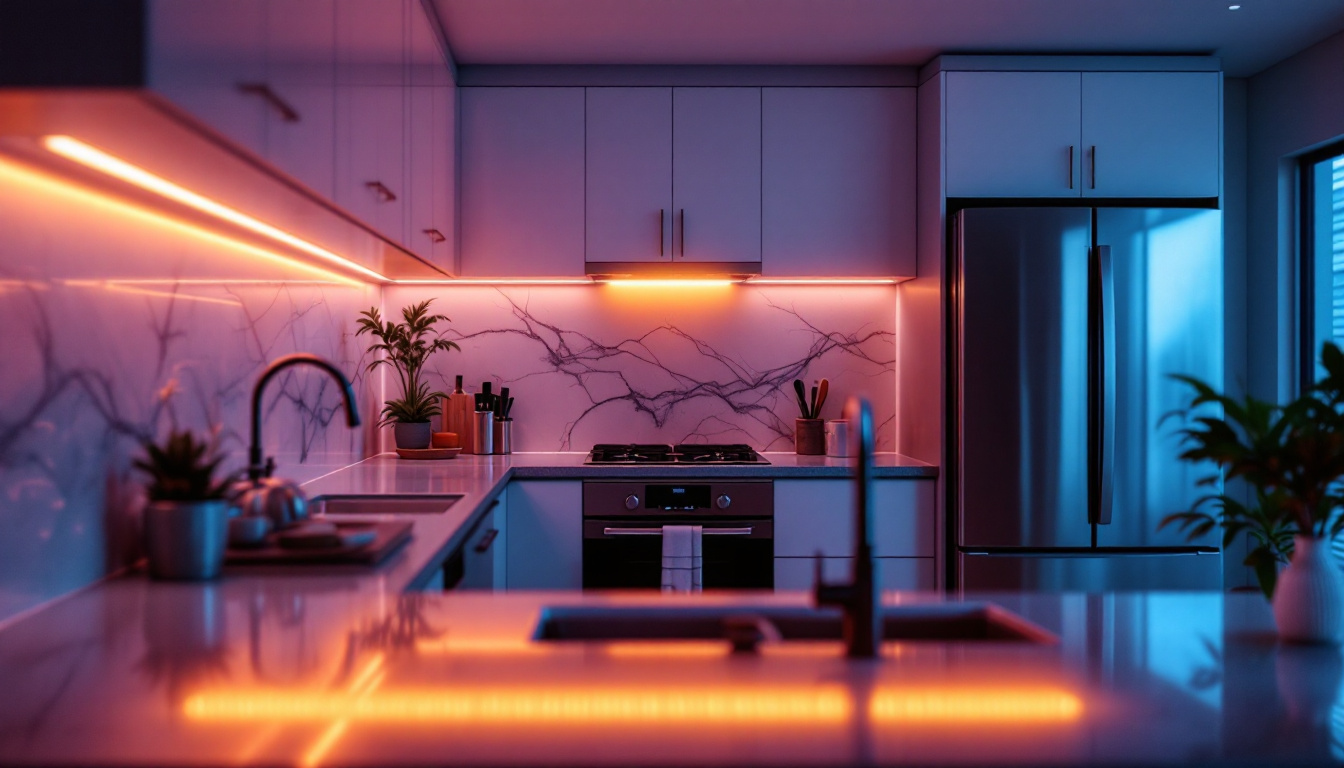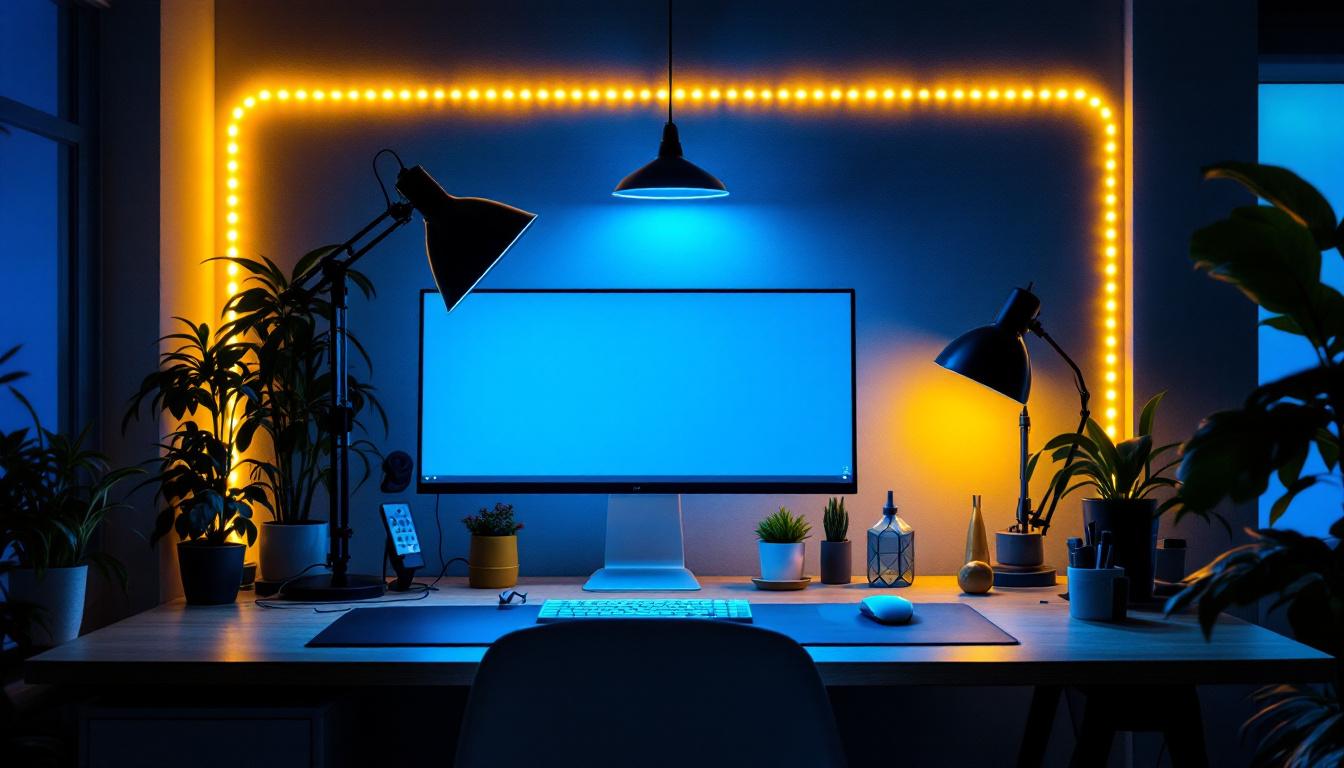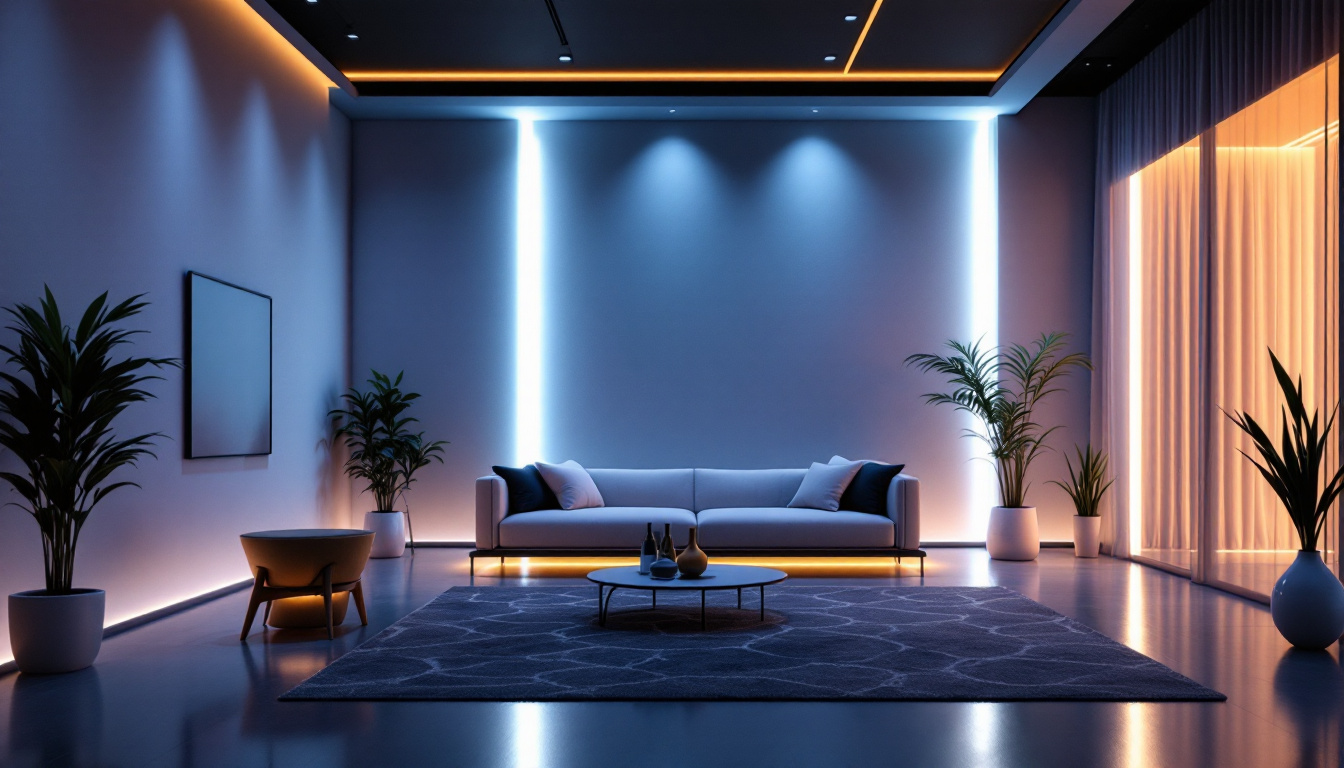
In the ever-evolving world of lighting solutions, LED shop lights have emerged as a popular choice among contractors and businesses alike. Their energy efficiency, longevity, and versatility make them ideal for various applications, from commercial spaces to industrial environments. However, understanding how to effectively link LED shop lights is crucial for maximizing their benefits. This comprehensive guide aims to equip lighting contractors with the knowledge and skills necessary to implement linked LED shop lighting systems successfully.
Before delving into the specifics of linking LED shop lights, it is essential to grasp what LED shop lights are and how they function. LED, or Light Emitting Diode, technology provides a highly efficient alternative to traditional lighting solutions, such as fluorescent and incandescent bulbs. With a significantly longer lifespan and reduced energy consumption, LED shop lights are becoming the go-to option for many contractors.
The advantages of using LED shop lights extend beyond mere energy savings. First and foremost, they offer superior illumination quality, which is vital in workspaces where visibility is paramount. Additionally, LED lights emit less heat, reducing the burden on air conditioning systems and further enhancing energy efficiency.
Moreover, LED shop lights are available in a variety of styles and configurations, allowing contractors to tailor lighting solutions to meet specific needs. Whether it’s a high bay light for a warehouse or a slimline fixture for a retail space, the versatility of LED technology ensures that there is a suitable option for every application. This adaptability also means that LED shop lights can be integrated into existing lighting systems with relative ease, making upgrades both cost-effective and efficient.
When selecting LED shop lights for a project, several key features should be taken into account. Lumens, which measure brightness, are a critical factor; the higher the lumens, the brighter the light. Additionally, the color temperature, measured in Kelvins, affects the ambiance of the space. A cooler color temperature (5000K) is often preferred for work environments, while warmer temperatures (3000K) may be more suitable for retail settings.
Other features to consider include the fixture’s design, energy efficiency ratings, and compatibility with linking systems. Understanding these elements will help contractors make informed decisions that enhance both functionality and aesthetic appeal. Furthermore, many LED shop lights come equipped with advanced features such as dimming capabilities and motion sensors, which can further optimize energy usage and create a more dynamic lighting environment. These innovations not only contribute to energy savings but also enhance the overall user experience, making spaces more comfortable and adaptable to various tasks.
Linking LED shop lights allows for a more cohesive lighting solution, providing uniform illumination across a workspace. This is particularly important in larger areas where multiple fixtures are required. By linking lights, contractors can reduce the number of switches and simplify the control of the lighting system.
One of the primary benefits of linking LED shop lights is the enhanced control it offers. Contractors can create zones within a workspace, allowing for tailored lighting solutions based on specific tasks or activities. For example, brighter lighting can be implemented in areas requiring detailed work, while softer lighting can be used in relaxation zones.
Furthermore, linking lights can facilitate the integration of advanced control systems, such as dimmers and motion sensors. This not only enhances energy efficiency but also provides users with the flexibility to adjust lighting according to their needs.
Linking LED shop lights can also streamline the installation process. Instead of wiring each fixture individually, contractors can connect multiple lights in series or parallel configurations, reducing installation time and labor costs. This is especially beneficial in large-scale projects where efficiency is paramount.
Moreover, a linked system can simplify troubleshooting and maintenance. If one light fails, it is often easier to identify and replace the faulty fixture in a linked setup, minimizing downtime and ensuring that the workspace remains well-lit.
There are several methods for linking LED shop lights, each with its advantages and considerations. Understanding these systems is essential for contractors looking to implement effective lighting solutions.
Hardwired linking involves connecting LED shop lights directly to the electrical system of the building. This method typically provides a more permanent solution and is ideal for installations where the lighting layout is unlikely to change. Hardwired systems can support larger numbers of fixtures, making them suitable for expansive workspaces.
However, this method requires more extensive electrical work and may necessitate compliance with local building codes. Contractors should ensure that they are familiar with these regulations to avoid potential issues during installation.
Plug-and-play linking systems offer a more flexible alternative to hardwired solutions. These systems allow contractors to connect multiple LED shop lights using standard power cords, making installation quick and straightforward. This method is particularly advantageous in temporary or adaptable workspaces where lighting configurations may change frequently.
While plug-and-play systems are easier to install, they may have limitations in terms of the number of fixtures that can be linked. Contractors should assess the specific needs of the project to determine the most suitable linking method.
Wireless linking technology is an innovative solution that allows LED shop lights to communicate without physical connections. This method utilizes radio frequency or Bluetooth technology to control multiple fixtures from a single point. Wireless systems offer unparalleled flexibility, enabling contractors to create dynamic lighting arrangements that can be adjusted remotely.
Despite their advantages, wireless systems may require additional components, such as hubs or controllers, which can increase project costs. Additionally, contractors should consider potential interference from other wireless devices in the area.
To ensure a successful installation of linked LED shop lights, contractors should adhere to several best practices. These guidelines will help optimize performance and longevity while minimizing potential issues.
Before installation, a well-thought-out lighting plan is essential. Contractors should assess the workspace and determine the optimal placement of fixtures to achieve uniform illumination. Factors such as ceiling height, surface reflectivity, and the nature of tasks performed in the area should all be considered during the planning phase.
Creating a lighting layout that includes the number of fixtures, their wattage, and their linking method will provide a clear roadmap for installation. This planning stage is critical for ensuring that the final result meets both aesthetic and functional requirements.
Safety should always be a top priority during the installation of LED shop lights. Contractors must adhere to local electrical codes and regulations, ensuring that all wiring and connections are secure and properly insulated. It is also crucial to use appropriate personal protective equipment (PPE) when working at heights or handling electrical components.
Additionally, contractors should conduct a thorough inspection of the fixtures before installation. Checking for any signs of damage or defects will help prevent issues down the line and ensure that the lighting system operates efficiently.
Once the installation is complete, thorough testing is essential to ensure that the linked LED shop lights function as intended. This includes checking for proper illumination levels, verifying that all fixtures are operational, and ensuring that any control systems are functioning correctly.
Commissioning the lighting system involves fine-tuning settings, such as dimming levels and sensor sensitivity, to optimize performance. This step is crucial for delivering a high-quality lighting experience that meets the needs of the workspace.
Even the most well-designed lighting systems require maintenance to ensure optimal performance over time. Understanding common issues and their solutions can help contractors address problems efficiently and effectively.
Conducting regular inspections of linked LED shop lights is essential for identifying potential issues before they escalate. Contractors should check for signs of wear and tear, such as flickering lights or dimming, which may indicate the need for replacement or repairs.
Additionally, cleaning the fixtures to remove dust and grime will help maintain optimal light output and prolong the lifespan of the LEDs. A simple wipe-down with a damp cloth can make a significant difference in performance.
When issues arise, contractors should have a systematic approach to troubleshooting. Common problems may include flickering lights, which can be caused by loose connections or compatibility issues with dimmers. Identifying the root cause is essential for implementing the appropriate solution.
In cases where a linked system experiences a complete failure, contractors should check the power supply and ensure that all connections are secure. If necessary, isolating individual fixtures can help pinpoint the faulty component.
Linking LED shop lights presents a valuable opportunity for lighting contractors to enhance their projects with efficient and effective lighting solutions. By understanding the benefits of LED technology, the importance of linking systems, and best practices for installation and maintenance, contractors can deliver exceptional results to their clients.
As the demand for energy-efficient lighting continues to grow, staying informed about the latest advancements in LED technology and linking methods will be crucial for success in the industry. With the right knowledge and skills, lighting contractors can illuminate workspaces with confidence, ensuring that they meet the diverse needs of their clients while maximizing energy savings and performance.
Ready to elevate your lighting projects with the efficiency and sophistication of LED shop lights? At LumenWholesale, we provide lighting contractors like you with the highest quality, spec-grade LED solutions at unbeatable wholesale prices. Say goodbye to local distributor markups and hello to a vast selection of industry-standard lighting that ensures performance and reliability for every workspace. Plus, with free shipping on bulk orders, you can stock up on premium lighting without any hidden fees. Don’t compromise on quality or cost. Visit LumenWholesale today and discover the best value in wholesale lighting for your next project.

Explore the Norwood Three phenomenon and its implications for lighting contractors.

Discover how to transform your kitchen with LED under-cabinet lighting.

Discover the secrets to enhancing lighting efficiency with our comprehensive guide on optimizing light feet.

Explore the revolutionary impact of wafer LED lights on modern lighting design and installation.